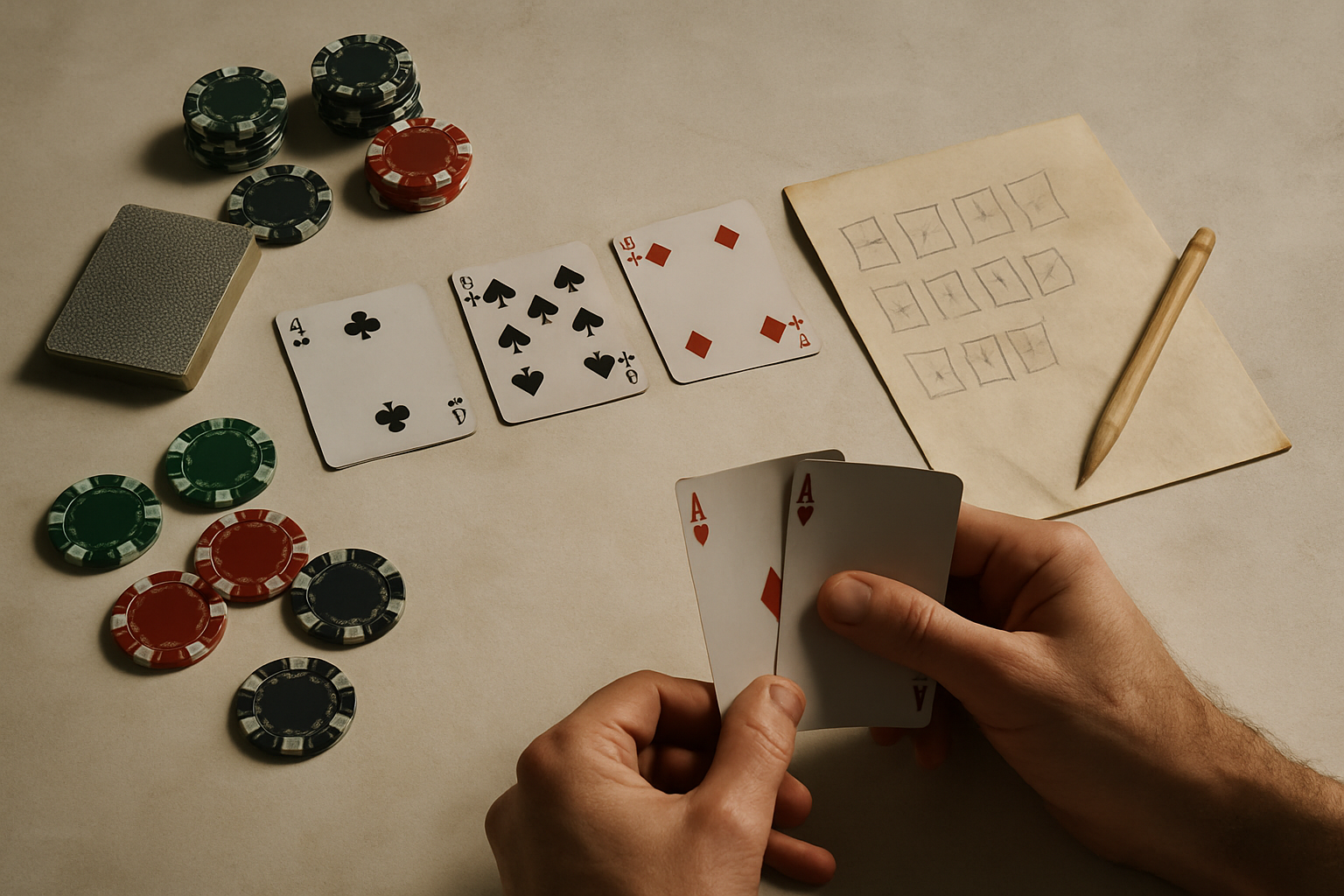Navigating the high-stakes world of poker tournaments with a short stack can be a nerve-wracking experience for many players. In these intense moments, every decision counts, and having the right strategies in place is crucial to turning the game around.
As a seasoned poker enthusiast, I’ve honed my skills in short-stack play to maximize my chances of success when the chips are down. In this article, I’ll delve into the art of short-stack play in poker tournaments, sharing valuable insights and effective strategies to help you thrive in challenging situations.
From understanding the importance of patience and timing to making calculated moves that can shift the course of the game, mastering the dynamics of short-stack play is essential for any serious poker player looking to elevate their game to the next level.
Understanding Short-Stack Play in Poker Tournaments
What is Short-Stack Play?
Short-stack play in poker tournaments refers to a situation where a player has a smaller stack of chips compared to their opponents at the table. As a short stack, I’m usually limited in the number of chips I have, requiring me to make strategic decisions to stay competitive in the game.
Importance of Short-Stack Strategy
In poker tournaments, mastering short-stack strategy is crucial for survival and success. As a short stack myself, I understand the significance of adopting the right strategies to maximize my chip value and make impactful moves.
By focusing on patience, timing, and calculated decisions, I enhance my chances of thriving under pressure and turning challenging situations into opportunities for a comeback.
Basic Short-Stack Strategies
When facing a short stack in poker tournaments, it’s crucial to approach the game with precision and focus. I’ll delve into two fundamental strategies that can significantly impact your gameplay.
Tightening Your Starting Hand Range
In short-stack situations, I prioritize playing premium hands like strong pairs (e.g., pocket aces, kings) and high-value hands (e.g., ace-king, ace-queen). These hands provide a better chance of winning and can help you increase your chip stack when the opportunity arises.
By tightening your starting hand range, you minimize risky plays with marginal hands that could deplete your stack further. Remember, quality over quantity is key when your chip count is low.
Push-Fold Strategy
One effective approach for short-stack play is the push-fold strategy. This tactic involves either pushing all your chips into the pot or folding pre-flop to preserve your stack. I rely on this strategy when my chip count is critically low, as it puts pressure on opponents and gives me a chance to double up quickly.
By mastering the push-fold strategy, you can capitalize on favorable situations and stay competitive even with a short stack. Incorporating these strategies into your short-stack gameplay can elevate your performance and strategic prowess at the poker table.
Stay focused, make calculated decisions, and adapt your tactics based on the dynamics of the game to make the most out of your short-stack opportunities.
Advanced Short-Stack Strategies
When facing a short stack in poker tournaments, adjusting based on opponents’ playing styles is crucial. Observing how your opponents react to different situations can help you tailor your strategy for maximum effectiveness. Adapting to their tendencies allows you to exploit their weaknesses and capitalize on favorable opportunities.
Exploiting Tight Opponents
Against tight opponents, aggressive play can be particularly effective. Tight players tend to fold more often, so putting pressure on them with well-timed raises and shoves can force them to fold their marginal hands.
By exploiting their cautious nature, you can accumulate chips and build your stack without significant risk.
Countering Aggressive Players
- Selective Engagement: Adopt a patient strategy by only entering pots with strong hands, allowing you to avoid unnecessary confrontations and conserve your chips.
- Trapping Aggressive Opponents: Use the aggressive tendencies of your opponents to your advantage by waiting for optimal moments to challenge them, maximizing the value of your premium hands.
Bluffing the Right Opponents
Bluffing can be a powerful tool in short-stack play, but it’s essential to choose the right opponents to bluff against. Targeting players who are likely to fold to pressure and have shown a propensity for folding can increase the success rate of your bluffs.
By bluffing selectively and against the right opponents, you can keep opponents guessing and maintain your competitive edge.
Adjusting to Table Dynamics
Understanding the overall dynamics of the table is crucial when playing with a short stack. Recognizing patterns in how players interact, position tendencies, and overall game flow can help you make informed decisions.
By adapting your play style to the specific dynamics of the table, you can exploit weaknesses and optimize your chances of success even with a limited stack.
Leveraging Image and Position
Utilizing your table image and position effectively can significantly impact your short-stack strategy. Leveraging a tight or aggressive image based on your previous plays can influence how opponents perceive your actions.
Additionally, being mindful of your position relative to aggressive players allows you to gain a strategic advantage and make informed moves to maximize your chip utility.
Capitalizing on Bubble Dynamics
During the bubble phase of a tournament, short-stack strategies become even more critical. Understanding the increased pressure on mid-stacked and big-stacked players to accumulate chips can provide opportunities for short stacks to exploit their cautiousness.
By capitalizing on bubble dynamics and making calculated moves, you can navigate through critical stages of the tournament and position yourself for a deeper run.
Reacting to Stack Sizes
Adapting your strategy based on the stack sizes of your opponents is essential in short-stack play. Identifying players with similar or shorter stacks allows you to target weaker opponents for potential double-ups.
Conversely, avoiding confrontations with significantly larger stacks reduces the risk of elimination and preserves your chances of survival. Reacting strategically to varying stack sizes enhances your decision-making and ensures a more nuanced approach to short-stack situations.
Mastering Short-Stack Psychology
Mastering the psychological aspects of short-stack play is key to success in tournaments. Maintaining a resilient mindset, avoiding tilt, and staying focused under pressure are vital components of effective short-stack strategy.
By cultivating a strong mental game and staying composed in challenging situations, you can make sound decisions and seize opportunities to turn the tide in your favor.
Navigating Endgame Scenarios
As tournaments progress towards the late stages, navigating endgame scenarios with a short stack requires precision and calculated risks. Understanding the dynamics of short-handed play, adjusting to changing blinds and antes, and seizing moments to accumulate chips are essential strategies.
By staying alert, capitalizing on vulnerabilities of opponents, and making strategic moves, you can position yourself for a deep run and potentially emerge victorious with effective short-stack play.
Implementing Effective Short-Stack Strategies
In implementing effective short-stack strategies, I prioritize making calculated decisions to navigate challenging tournament situations successfully. It’s crucial to grasp the essence of short-stack play, where having fewer chips than opponents demands strategic acumen to stay competitive.
Mastering these strategies is not just about survival but about creating opportunities for substantial comebacks and maximizing chip value.
When it comes to executing short-stack strategies, two fundamental approaches take center stage: tightening the starting hand range and utilizing a push-fold strategy. Focusing on premium hands allows me to mitigate risks, safeguard my stack, and increase the probability of impactful plays.
The push-fold tactic, entailing going all-in or folding pre-flop, serves as a powerful tool to exert pressure on adversaries and open avenues for doubling up. Moving beyond the basics, advanced short-stack strategies necessitate adept adjustments to opponents’ gameplay styles.
Exploiting tight opponents through aggressive tactics, countering aggressive players by being choosy, and employing strategic bluffing against susceptible targets are key aspects for successful maneuvering. Adapting to table dynamics, leveraging image and position, and capitalizing on bubble dynamics form the bedrock of a robust short-stack game plan.
Furthermore, reacting swiftly to varying stack sizes and mastering the psychological facets of short-stack play are pivotal for maintaining focus and resilience. Navigating endgame scenarios with precision and calculated risks positions me favorably for deeper tournament runs.
With a sharp focus on these strategies, serious poker players can aim to enhance their skills and elevate their overall performance on the poker table.





